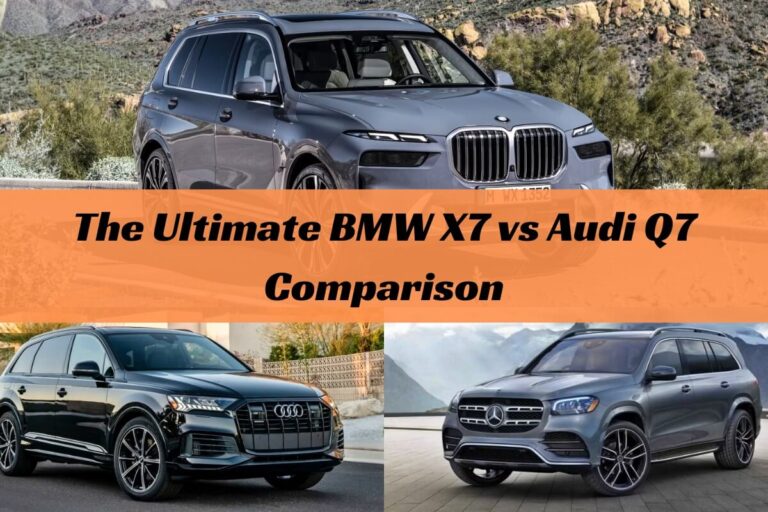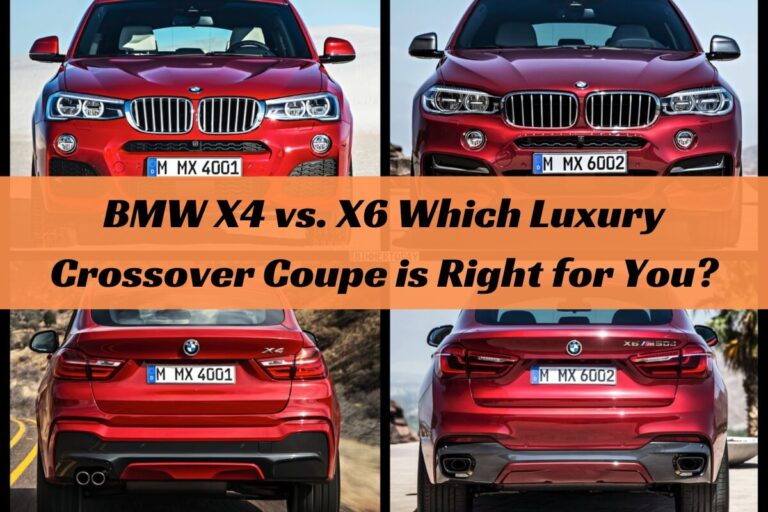
For decades, German automakers Audi and BMW have been locked in a fierce battle for luxury car supremacy. These brands are synonymous with high-performance vehicles that deliver an unparalleled driving experience. But which one truly reigns supreme?
In this head-to-head comparison, we’ll examine the key differences between Audi and BMW to determine which brand offers the best overall luxury car package in 2023.
From performance and handling to interior design, technology, safety ratings, and long-term value – we’ll analyze every aspect in detail to crown an overall winner. So buckle up and get ready to explore the ultimate luxury car showdown: Audi vs BMW.
The History and Brand Positioning of Audi vs BMW
To properly evaluate these automotive giants, we first need context on their histories and how they’ve positioned themselves in the luxury vehicle space:
Audi was originally founded in 1909 but is most well-known for its revival in the 1960s under Volkswagen’s ownership. The brand has built its reputation on embracing new automotive technologies like all-wheel drive (marketed as “Quattro”).
Audi’s brand positioning revolves around sleek, modern designs paired with a refined, comfortable driving experience ideal for luxury daily drivers. Their “Vorsprung durch Technik” (Advancement Through Technology) slogan reflects their innovative spirit.
BMW, short for Bavarian Motor Works, was founded in 1916 and has its roots in airplane engine manufacturing. BMW really took off in the 1960s thanks to its well-engineered sport sedans.
The ultimate “driving machine” is BMW’s calling card – their vehicles prioritize high-performance, precision handling, and an exhilarating ride above all else. From powerful engines to finely-tuned suspensions and steering, BMW epitomizes luxury sport driving.
With those brand distinctions in mind, let’s explore how Audi and BMW compare across key criteria in 2023:
Performance and Handling
For drivers who crave heart-pounding acceleration and razor-sharp handling, BMW takes the performance crown in most scenarios.
BMW’s philosophy centers around designing vehicles with near-perfect 50/50 weight distribution, rear-wheel drive platforms, and finely-tuned steering/suspension for maximum responsiveness. Their engines offer gobs of power across the lineups.
The iconic M-series models like the M3, M5, and M8 are purpose-built performance beasts capable of giving exotic supercars a run for their money on the track.
That said, Audi is no performance slouch, especially with their sportier S and RS trim levels. Audis with the Quattro all-wheel drive system can put power down more effectively than rear-wheel drive BMWs in inclement conditions. Models like the RS6 Avant and RS7 deliver blistering straight-line acceleration.
But where Audis truly shine is in delivering that Autobahn-tuned performance with more refinement and comfort than BMWs – their suspensions tend to be more forgiving over rough pavement.
Winner: BMW for pure performance and handling, Audi for balancing performance with comfort
Interior Design and Technology
On the inside, both Audi and BMW present exquisite luxury car cabins befitting their high price points, but they have distinct design philosophies:
Audi interiors are minimalist marvels with impeccable attention to detail. Sleek lines, premium materials like leather and matte wood, and an intuitive widescreen cockpit layout create a distinctly modern experience. The Audi Virtual Cockpit digital instrument cluster is a standout feature.
BMW interiors have a more traditional yet driver-focused design. The controls have a be-knit look and feel, with the center gauges canted slightly toward the driver’s seat. You’ll find a good blend of premium materials and technology like BMW’s iDrive infotainment.
In terms of features and technologies, these brands are quite evenly matched in 2023 with robust suites of advanced safety systems, driver aids, premium audio, and comfort amenities. BMWs have an edge in usability with the iDrive control knob, while Audi’s interfaces can be a bit complicated.
Winner: Draw for overall interior design and cabin technologies
Exterior Styling
On the outside, these German rivals have distinctly different interpretations of “luxury car” design language:
Audi styling embodies crisp, modern lines with geometric elements across their sedans, coupes, crossovers, and SUVs. The signature Singleframe grille is unmistakable. Design themes project techno-luxury and understatement rather than ostentatiousness.
BMW takes a sportier, more aggressive approach to their exterior designs, from the signature kidney grilles to sculpted hood lines and sloping roof profiles. Their designs evoke a sense of speed and boldness.
Whether you prefer Audi’s sleekness or BMW’s aggression is purely subjective. But in terms of brand recognition and standing out on the road, BMW’s styling is more distinctive and recognizable across their lineup.
Winner: BMW for more distinctive and recognizable styling
Reliability and Ownership Costs
Unfortunately, neither Audi nor BMW enjoys stellar reputations for reliability in comparison to mainstream brands. These are highly complex, technological luxury vehicles – more things can go wrong.
According to J.D. Power’s 2023 Vehicle Dependability Study, BMW ranked slightly better than Audi in long-term dependability after three years of ownership.
That said, “better than Audi” isn’t saying much – both brands landed in the bottom half of the rankings. Electrical issues, engine troubles, and faulty components are common pain points.
In terms of upfront costs, Audis generally have a lower starting MSRP than their BMW counterparts across sedan and SUV categories.
However, both brands demand a premium price tag overall. Over the long haul, expect similarly exorbitant costs for maintenance, repairs, and other ownership expenses with either make.
Winner: Slight edge to BMW for dependability, Draw for overall ownership costs
Safety Ratings
One area where Audi has BMW clearly beat is in independent safety ratings from organizations like IIHS and NHTSA.
Most of Audi’s 2023 lineup scored extremely well, with vehicles like the A3, A4, and A6 earning IIHS TOP SAFETY PICK+ honors. In contrast, the only current BMWs with a top IIHS award are the X3 and X5 SUVs.
Audi’s advantage comes down to their incorporation of advanced active safety features like lane-keeping assist, forward collision warning with auto-braking, and blind spot monitoring on most core models as standard equipment. BMWs tend to reserve those features for higher trims or option packages.
Winner: Audi for superior standard safety features and crash test ratings
The Verdict – Audi vs BMW in 2023
So which luxury German brand reigns supreme in 2023: Audi or BMW? Here’s the final tally:
- Performance and Handling: BMW
- Interior Design/Technology: Draw
- Exterior Styling: BMW
- Reliability/Ownership Costs: Slight Edge to BMW
- Safety Ratings: Audi
Based on the analysis, BMW narrowly edges out Audi as the overall winner in 2023. However, Audi is an incredibly close runner-up.
BMW’s superior performance chops, sportier and more distinctive exterior designs, and slightly better predicted reliability give it a lean advantage.
But Audi is no slouch, besting BMW in standard safety ratings and matching its luxury appointments and cabin technologies. Not to mention Audi’s lower base prices and reputation for comfort.
The “better” brand likely comes down to your personal priorities. Those wanting a thrilling driver’s car with head-turning style should go BMW. Shoppers who prioritize comfort, safety, and value may prefer Audi.
Ultimately, both are exceptional luxury automotive brands producing world-class vehicles in 2023. The competition is incredibly tight, so test driving models from each is highly recommended before purchasing.
No matter which you choose, an Audi or BMW is sure to deliver a premium driving experience befitting their impeccable German pedigree.






